Contest Purpose
The purpose of this contest is to promote the use of animal protein in the diet by teaching the art and science of safely preparing beef, pork, chicken, and shrimp in an outdoor setting. Investment in this activity will provide 4-H youth with life skills, including decision-making, healthy lifestyle choices, and communication.
Contest Eligibility
All bona fide Florida 4-H members between 11 and 18 years of age prior to September 1 of the current 4-H year are eligible. Participants who have previously placed 1st or 2nd for a given protein at the state contest cannot participate in that same protein. All participants are required to prepare their recipe in the presence of a parent or guardian prior to the contest.
A minimum of four contestants are required to compete in a protein for prizes to be awarded, but if three or fewer compete, all will be allowed to go forward to the state contest.
The state winner or highest placing senior (14 years of age by January 1 of the current year) for chicken will be eligible to participate in the National Poultry Cookery Contest in Louisville, KY. At the National Contest, the Florida representative must prepare an unmarinated, entire, and intact half chicken or turkey breast for judging. However, this is no longer a requirement for the Florida 4-H Tailgating Contest.

Credit: Camila Guillen, UF/IFAS Communications

Credit: Camila Guillen, UF/IFAS Communications
Tablecloths are no longer allowed at the Florida 4-H Tailgating Contest.
Protein Categories
Each contestant must provide enough fresh, uncooked, animal protein for two, 6–8 oz. cooked portions to serve the judges for palatability evaluations. The protein categories are as follows:
- Beef
- Pork
- Chicken
- Shrimp The only eligible seafood item is headless, deveined, fresh shrimp.
Beef, pork, chicken, and shrimp may be marinated prior to the contest. Sauces and marinades may be commercial or personal recipes.
Contest Overview
One hour prior to 14” Weber grills being started: Contestants must have their uncooked proteins and cooler temperatures checked at registration. Each contestant will fill out their contestant card, and a carbon copy will be taped to the plate/container that they turn in for palatability judging. Uncooked proteins must be covered at all times and maintained at ≤40°F. Temperature abuse is a food safety issue and will result in point deductions. Contestants with temperature-abused proteins (≥50°F) will not be allowed to compete. Personal clothing should follow the 4-H dress code, be clean and neat, and not present a safety concern (no loose-fitting clothing or open-toed shoes). Long hair should be secured for food and fire safety.
Thirty minutes prior to grills being started: Contestants will prepare their tables, fires, and proteins without assistance from other 4-H members or adults. Due to fire safety concerns, contestants will not be allowed to use tablecloths or have loose-leaf paper on display. Other fire safety concerns can be addressed by the contest coordinator. Contestants can use a laptop/iPad/poster & easel to complement their tabletop display to describe their recipe.
Fire and food safety will be observed by two (if possible) judges per protein. Contestants may not light their grills until the designated start time. Contestants must provide grilling supplies. All grills must be placed on the ground for safety reasons.
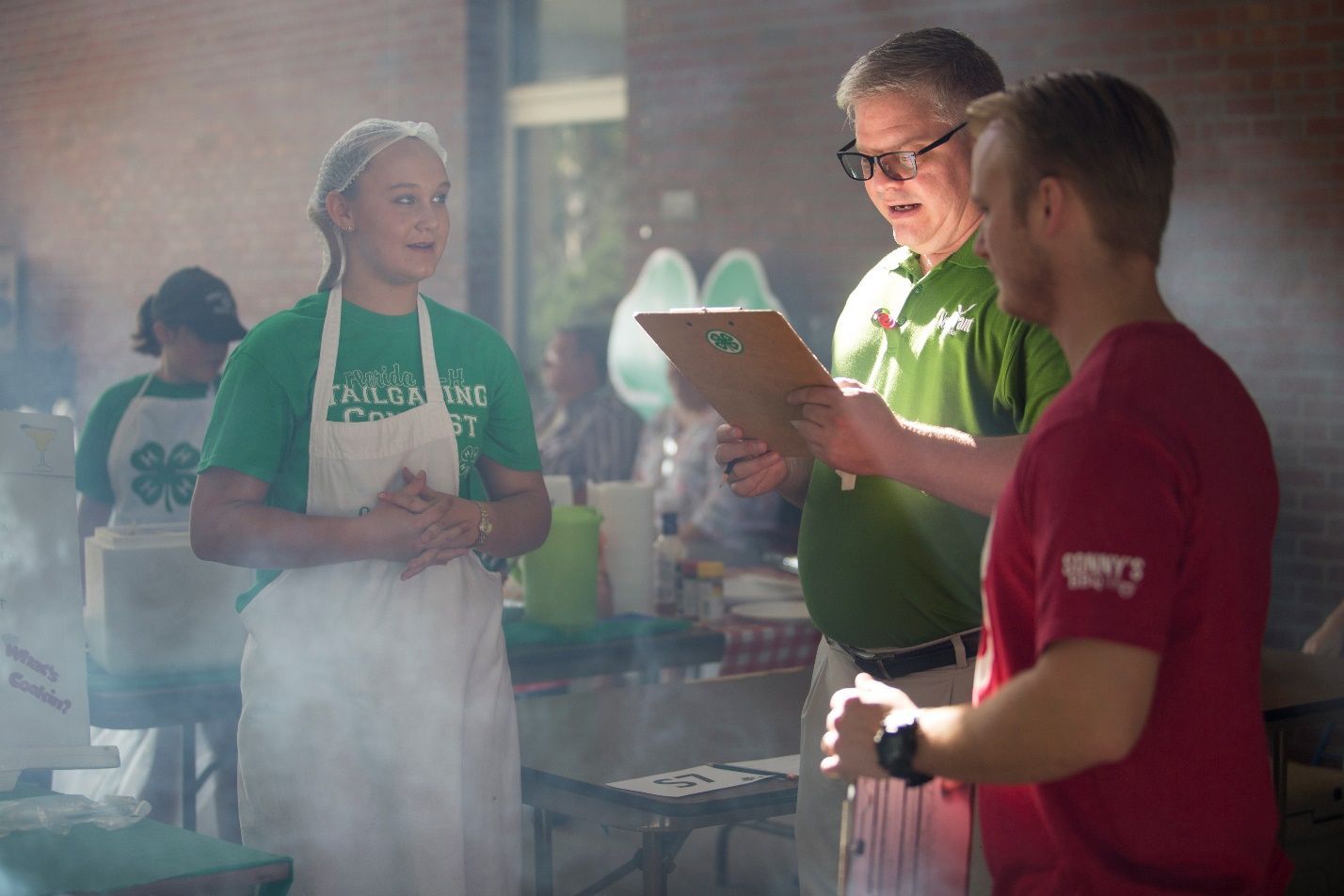
Credit: Camila Guillen, UF/IFAS Communications

Credit: Camila Guillen, UF/IFAS Communications
Tablecloths are no longer allowed at the Florida 4-H Tailgating Contest.
Judging
The fire and food safety judges will ask participants questions about their recipe and safety knowledge after all contestants have been observed. Contestants should expect questions relative to their table display, proper use of a meat thermometer, and the tailgate curriculum series linked below. Contest participants must have a fire and food safety judge assess proper cooking temperature/degree of doneness before submission. A team of three judges (if possible) will evaluate cooked submissions.
Entries will be submitted at specified time windows after grills have started:
- Shrimp: 45 min–1 hour 15 min
- Pork: 1 hour–1 hour 30 min
- Beef: 1 hour 15 min–1 hour 45 min
- Chicken: 1 hour 30 min–2 hours
Entries submitted outside of those windows will be deducted 10 points.
No additional items (drink, garnish, vegetables, etc.) should be submitted. Judges will be instructed to independently score all components of the entries turned in for palatability assessment (i.e., skin, dark, and white meat). If present, bacon will be removed prior to consuming the product.
Contest Curriculum
Scorecard
Awards
District Contest
For each protein category:
- 1st Place: $400
- 2nd Place: $250
- 3rd Place: $100
- 4th Place: $50
The top 2 individuals from each category are invited to compete at the State Competition.
State Contest
For each protein category:
- 1st Place: $1,500
- 2nd Place: $1,000
College Scholarships to a postsecondary institution of your choice.

Credit: Brian Estevez, UF/IFAS
Scholarship Fund Disbursement
Payment of scholarship funds will be made directly to the accredited college/university, technical/trade school, or college education/529 fund on behalf of the recipient. To receive your scholarship disbursement, winners must submit the following to the State 4-H Headquarters: two thank-you notes written to the donors of the awarded scholarship(s); verification of the student’s postsecondary enrollment, which could be a letter from the institution, class schedule, or receipt from the institution with the student’s name printed; name and address of the financial aid office of the student attends or will attend; education/529 fund information; 529 account number or Institution Student ID.
In the event of special education needs, payment of scholarship awards can be directed to the recipient upon prior approval of the State Extension Specialist. Under these conditions, an IRS Form 1099-MISC will be filed with the Internal Revenue Service and the recipient for the calendar year in which it is received.
Recipe Development
Visit these links to learn more about recipe development:
Competition Day Checklist
The contest will provide:
- Grills
- Charcoal
- Lighter fluid
- Half of an 8 ft table
- Paper plates to turn in protein
Contestants will need to provide:
- Meat (must be under 40°F at check-in)
- Spices, seasonings, marinades, and/or rubs
- Grilling utensils
- Meat thermometer
- Striker/lighter
- Recipe table display
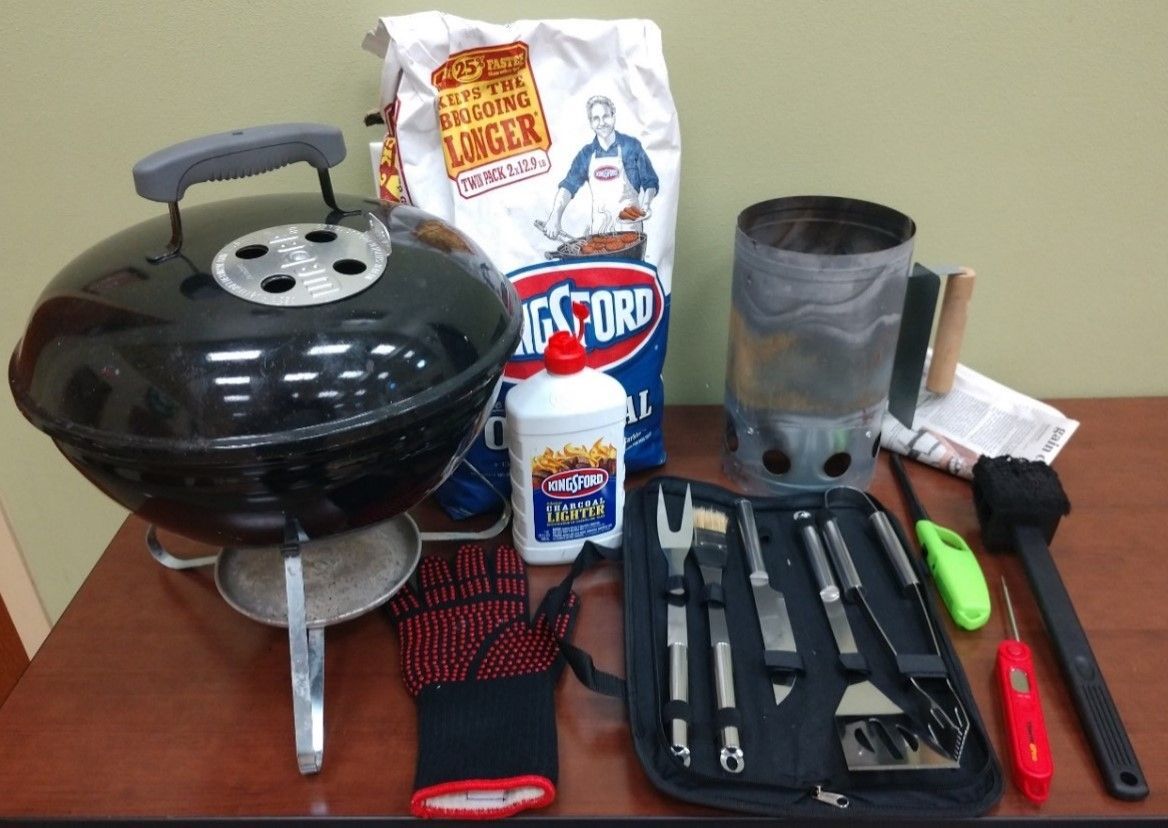
Credit: Brian Estevez, UF/IFAS
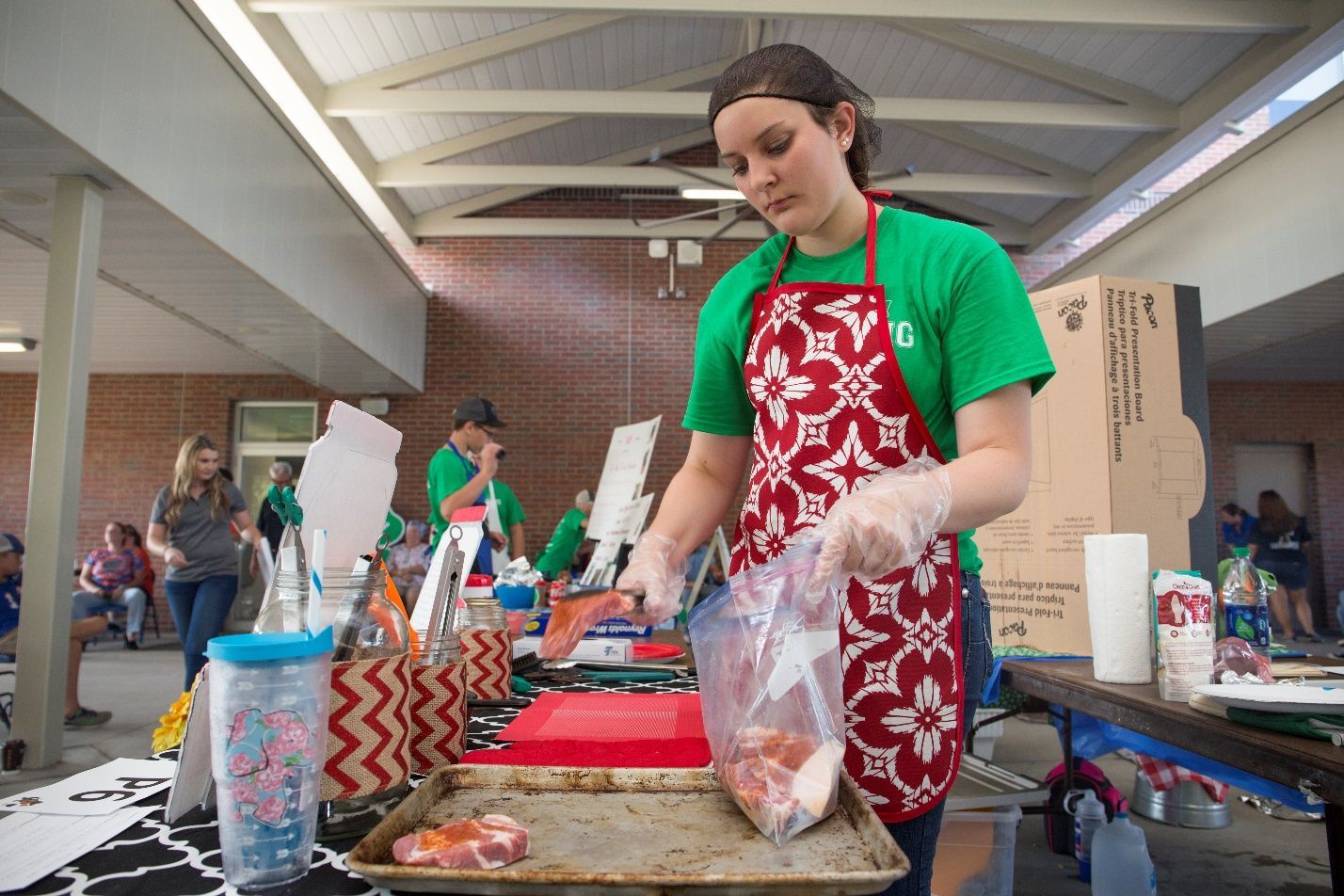
Credit: Camila Guillen, UF/IFAS Communications
Tablecloths are no longer allowed at the Florida 4-H Tailgating Contest.
Contestants are recommended to bring:
- Cooler
- Chimney and newspaper
- Grill brush
- Hot glove
- Pliers
- Recipe cards
- Fire-safe table decorations
- Apron
- Gloves
- Hairnet/hat
- Pen/pencil
- Sanitizing wipes
- Timer
- Aluminum foil
- Aluminum baking trays
- Tongs (4–6)
- Basting brush
- Spatula
- Mixing bowls
- Measuring spoons
- Measuring cup
- Cutting board(s)
- Other grilling items as needed
Food Safety
Clean
- Wash your hands and surfaces often.
- Wash your cutting boards, dishes, utensils, and countertops with hot soapy water after each use.
- Consider using paper towels to clean kitchen surfaces instead of cloth towels.
Cook
- Cook the food to the correct temperature.
- Always use a food thermometer to measure the internal temperature of cooked foods.
- Never assume the food is cooked based on color.
- The food is done when it reaches the safe minimum internal temperature.
Separate
- Separate raw meats from other foods.
- Keep raw meat, poultry, seafood, eggs, and juices away from other foods.
- Always remember to:
- Separate raw meat, poultry, seafood, and eggs from other food in the shopping cart, grocery bags, and refrigerator.
- Never place cooked food on a plate that previously held raw meat.
- Do not reuse marinades.
Chill
- Refrigerate or freeze meat within 2 hours of cooking or purchasing.
- Never thaw food at room temperature.
- Always marinate in the refrigerator.
- Use or discard refrigerated food on a regular basis.
How to properly thaw meats:
- Refrigerator: place your meat in a container that has a lid, and place it in the refrigerator for 1–2 days to thaw.
- Cold water: Place meat in a leak-proof bag and submerge in cold water. Change water every 30 minutes. Cook immediately.
- Microwave: Place meat in a microwave-safe bowl. Microwave for two minutes, then let stand for one. Repeat as needed. Cook immediately.
More Resources
Temperature
How to calibrate a dial thermometer:
- Fill a glass with ice and water.
- Put the thermometer in the water and let it sit for one minute.
- The thermometer should read 32°F. If it does not read 32°F, adjust the gauge by twisting the nut on the back.
How to check internal temperature:
Place the thermometer in the thickest part of the meat. Ensure that it is not touching bone, fat, or gristle. Be sure to clean your thermometer after each use.
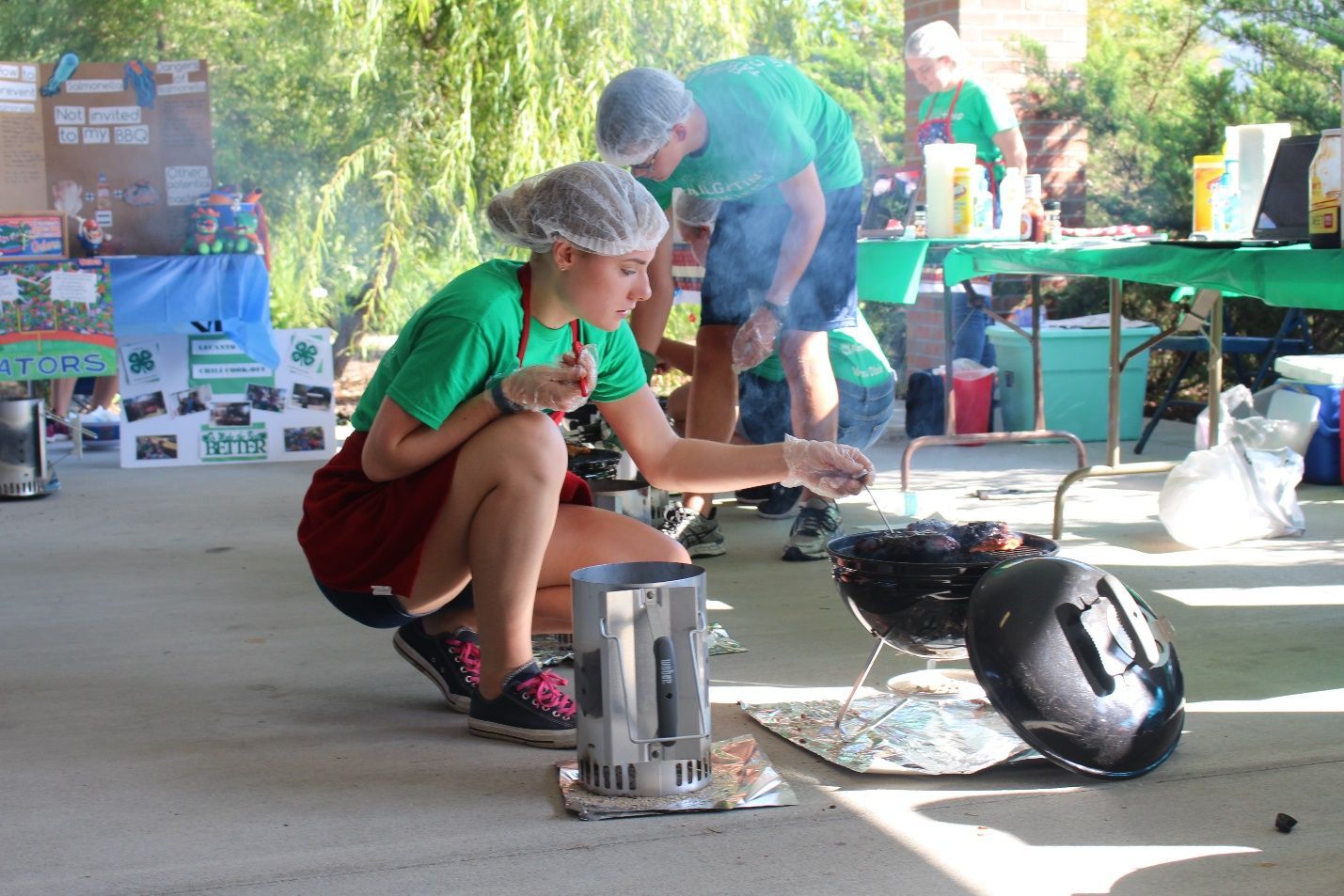
Credit: Camila Guillen, UF/IFAS Communications
Recommended Internal Temperatures:
- Beef: 145°F
- Shrimp: 145°F
- Pork: 145°F
- Ground Meat: 160°F
- Chicken: 165°F
Fire Safety
- Never put lighter fluid on a lit fire.
- Never leave your hot grill unattended.
- Coarse salt or baking soda can smother a grease fire.
- Make sure coals are cold before disposing of them.
- Keep young children, pets, and flammable materials away from your grill.
- Loose clothing and open-toed shoes should not be worn when grilling.
- Long hair should be secured for food and fire safety.
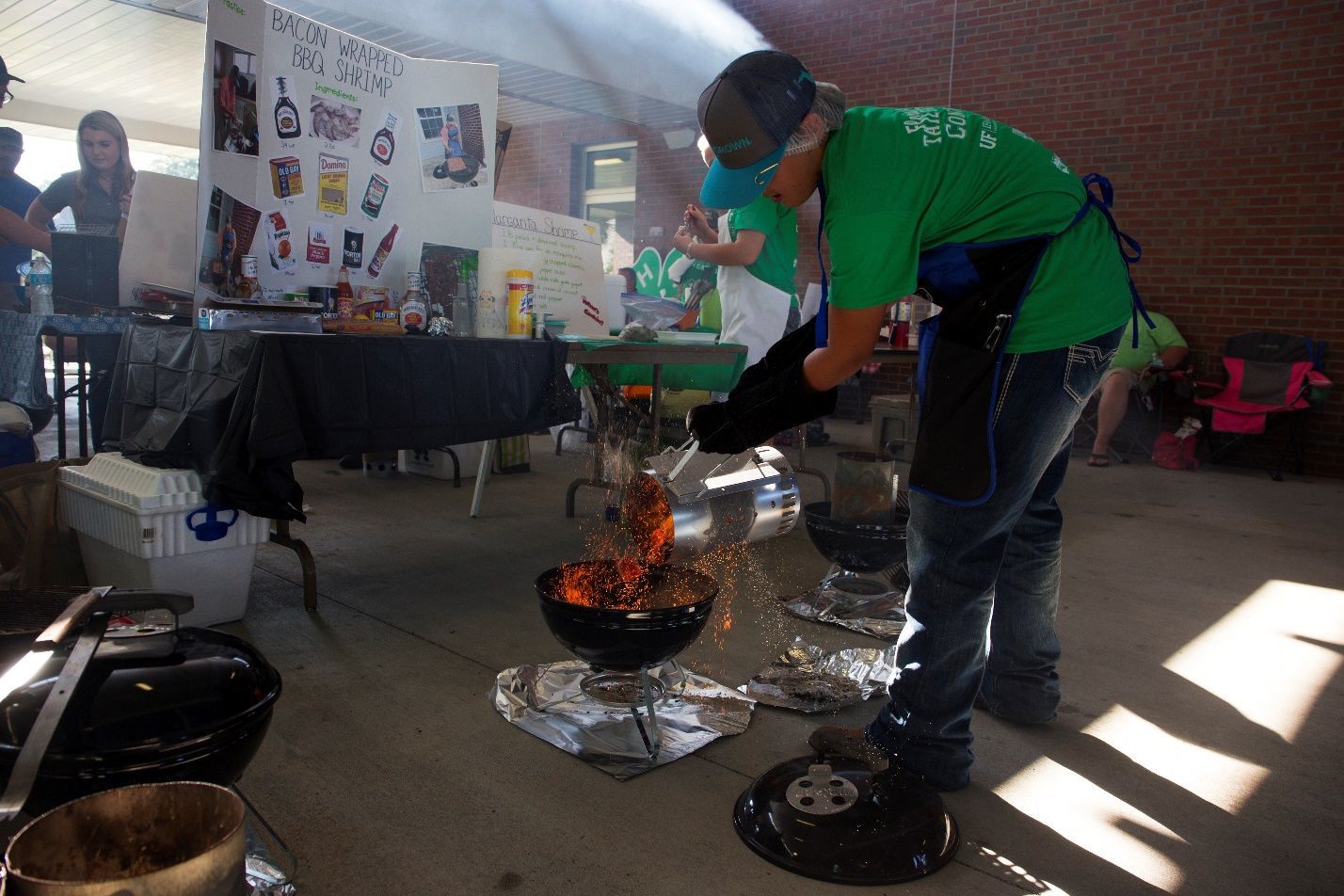
Credit: Camila Guillen, UF/IFAS Communications

Credit: Brian Estevez, UF/IFAS
More Resources
Fire Building
There are multiple ways to light your coals. You can use lighter fluid, a chimney starter, or ready-to-light charcoal. Never use gasoline or kerosene to start a fire, and never add lighter fluid to hot coals. Give all lighter fluids time to completely burn off to avoid an “off taste” in what you are grilling. Adjust the airflow of the grill by adjusting the vents at the top and the bottom. Closing the vents cuts off the air and suffocates the fire.
Lighter Fluid:
Step 1: Arrange the coals in a pyramid in your grill.
Step 2: Add lighter fluid to coals.
Step 3: Wait at least one minute before lighting coals with a long-stem match or a long-stem butane lighter.
Chimney Starter:
Step 1: Place newspaper in the bottom of the chimney.
Step 2: Pour your coals in the chimney.
Step 3: Light the newspaper through the bottom holes of the chimney.
Step 4: Dump the charcoals into the grill when they become slightly gray from ash.
Ready-to-Light Charcoal:
Step 1: Arrange the coals in a pyramid in your grill.
Step 2: Light the coals with a long-stem match or a long-stem butane lighter.
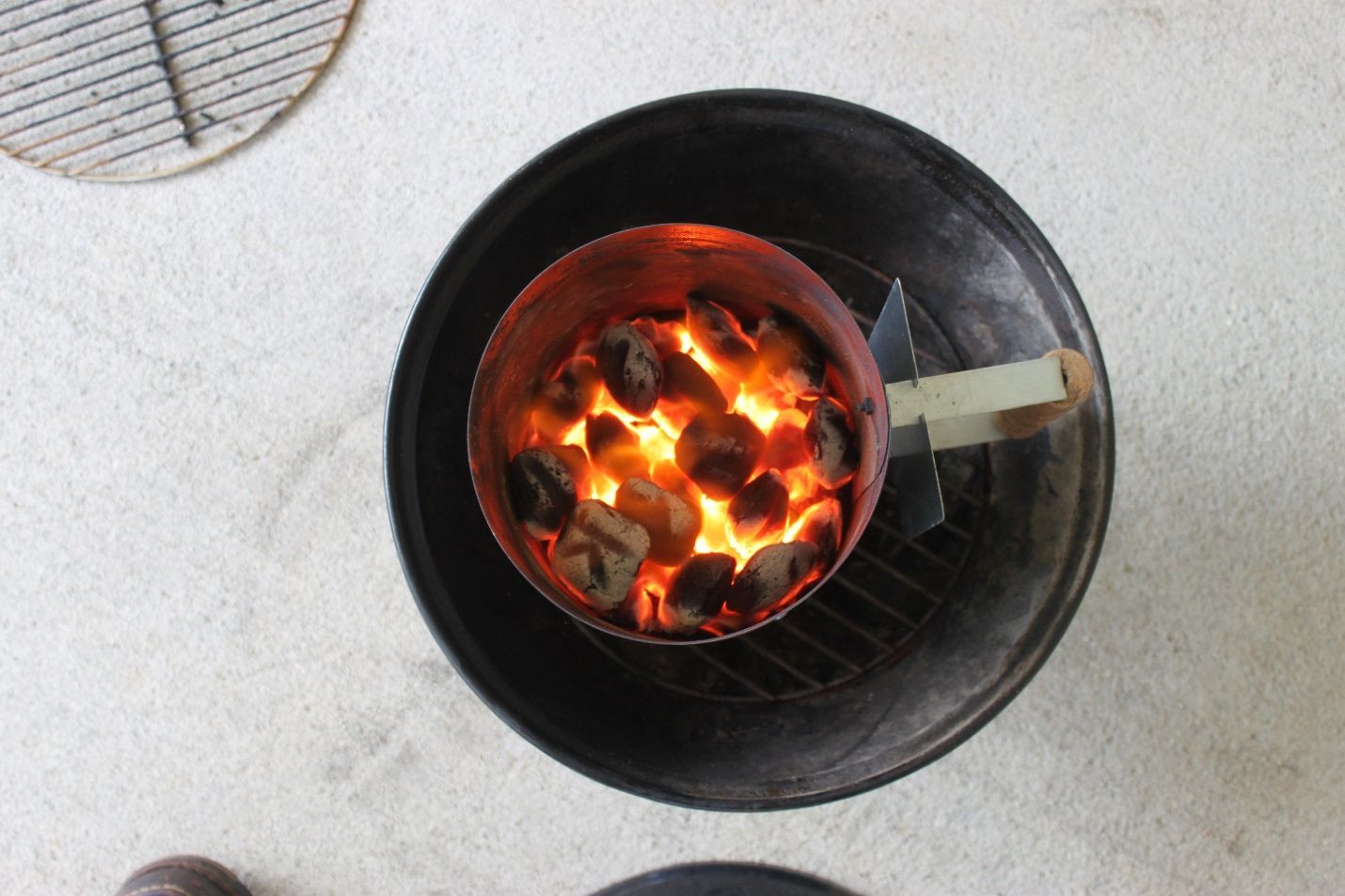
Credit: Brian Estevez, UF/IFAS
More Resources
Meat Selection
Click on the video below to learn about meat selection.
More Resources
Recipe Ideas
Visit these links to research grilling recipes.
Tabletop Display
The Florida 4-H Tailgating Contest requires participants to create a tabletop display to show off their recipe and creativity. Participants may use a laptop/iPad/poster & easel to complement their tabletop display to describe their recipe.
What should be included in my display?
- Poster
- Recipe
- Grill safety
- Pathogens
- Recipe cards (10) (optional)
- Fire-safe decorations (optional)
- Apron (optional)
- Other display items (as needed)

Credit: Brian Estevez, UF/IFAS
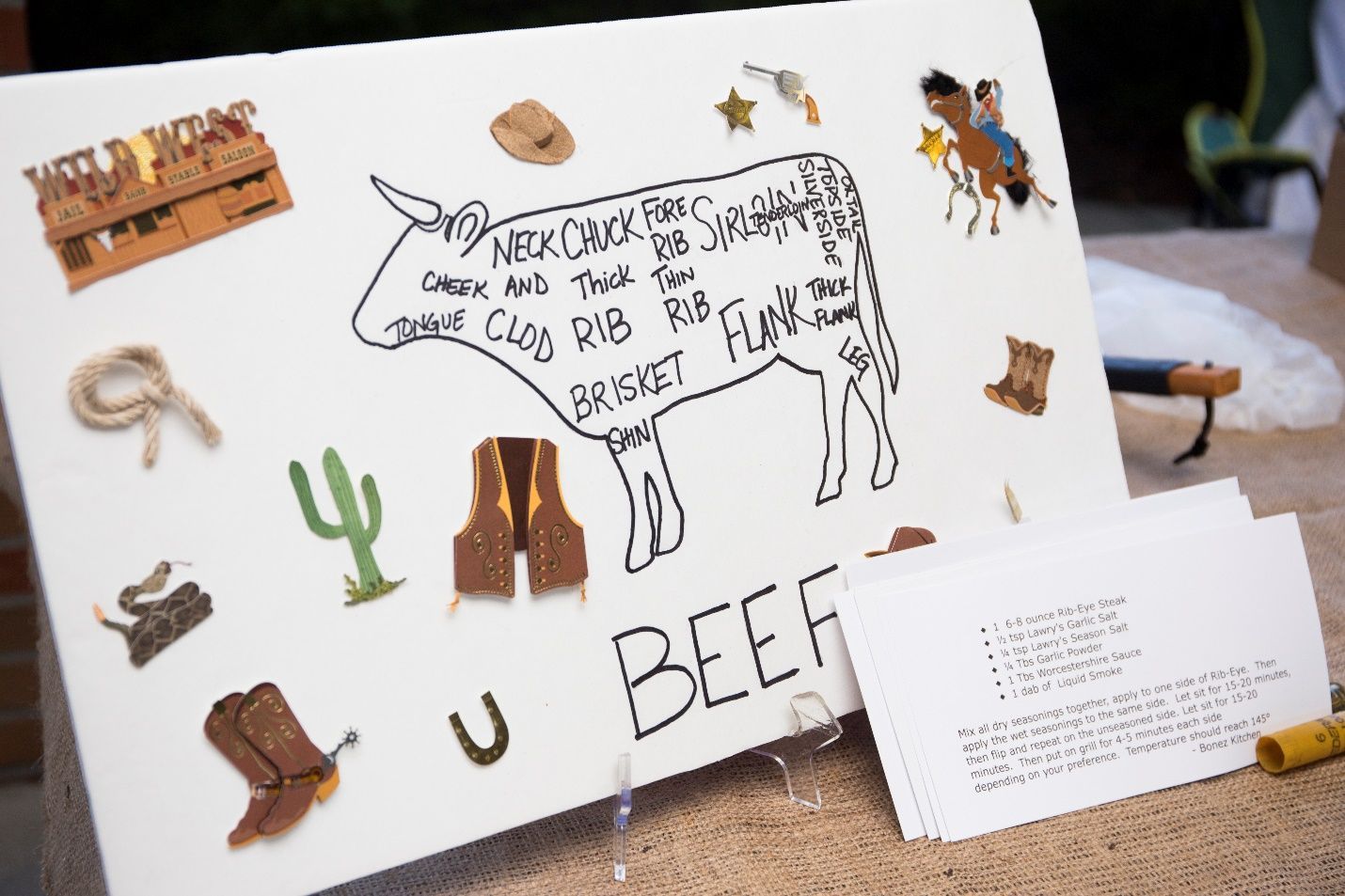
Credit: Camila Guillen, UF/IFAS Communications

Credit: Camila Guillen, UF/IFAS Communications

Credit: Camila Guillen, UF/IFAS Communications

Credit: Camila Guillen, UF/IFAS Communications
Tablecloths are no longer allowed at the Florida 4-H Tailgating Contest.
For more information on the Florida 4-H Tailgating Contest: https://florida4h.ifas.ufl.edu/events/healthy-living-events/tailgate-contest/
To participate in the Virtual Tailgating Day Camp: https://sites.google.com/ufl.edu/virtual-tailgate-day-camp/home
Thank you to our sponsors of the Florida 4-H Tailgating Contest.

Credit:
Intended Audience and Purpose
This document is intended for 4-H members who want to participate in the Florida 4-H Tailgating Contest. The purpose of this document is to provide all relevant resources for youth to be able to participate in the Florida 4-H Tailgating Contest.